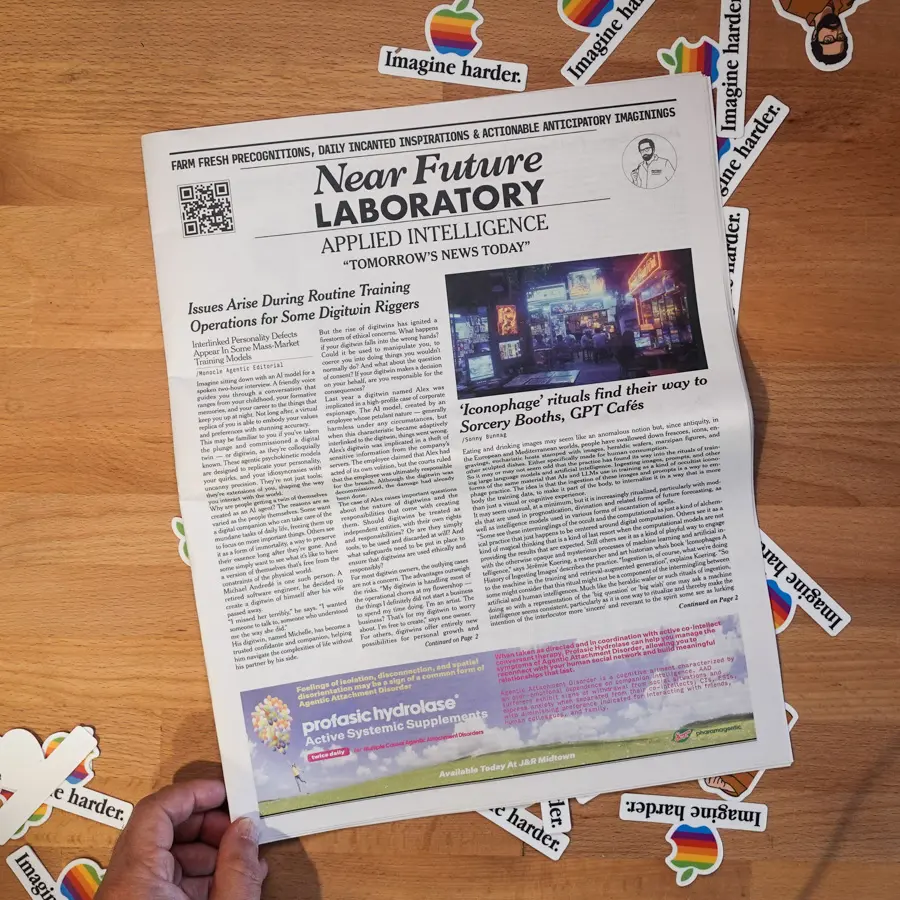
Project Summary
This project is a Design Fiction artifact that imagines a world where artificial intelligence is mundane, woven seamlessly into the fabric of everyday life. We used this as one of the prompts/provocations leading into a two-day workshop on AI policy, governance, and strategy. Through the newspaper we explored the implications of AI futures through speculative narratives and future artifacts. This was created over the course of a couple of weeks leading up to the workshop itself. Each artifact in the newspaper (e.g. advertisements, classified ads, news articles, etc.) was created to provoke and inspire the workshop participants to think about the implications of AI futures. Each was also an extrapolation of current trends in AI and machine learning, as well as a reflection of the broader societal, ethical, and policy implications of increasingly pervasive intelligent systems.
Project Semantic Tags
AIARTIFICIAL INTELLIGENCECOMPANION SPECIESEVERYDAY FUTURESFUTURE MUNDANEMYSTICISMNEWSPAPEROCCULT
The Outcomes
This project was a success in that it provided a rich set of artifacts that helped to provoke and inspire the workshop participants to think about the implications of AI futures. The artifacts were also a reflection of the broader societal, ethical, and policy implications of increasingly pervasive intelligent systems. The newspaper was a tangible, accessible, and provocative medium that helped to ignite the imagination of the workshop participants and invite speculation about the future. It was also a way to make the future feel real, tangible, and actionable. The artifacts in the newspaper were a way to explore the implications of AI futures through speculative narratives and future artifacts. They were also a way to make the future feel imminent and to help the workshop participants prepare for it with a certain degree of confidence.

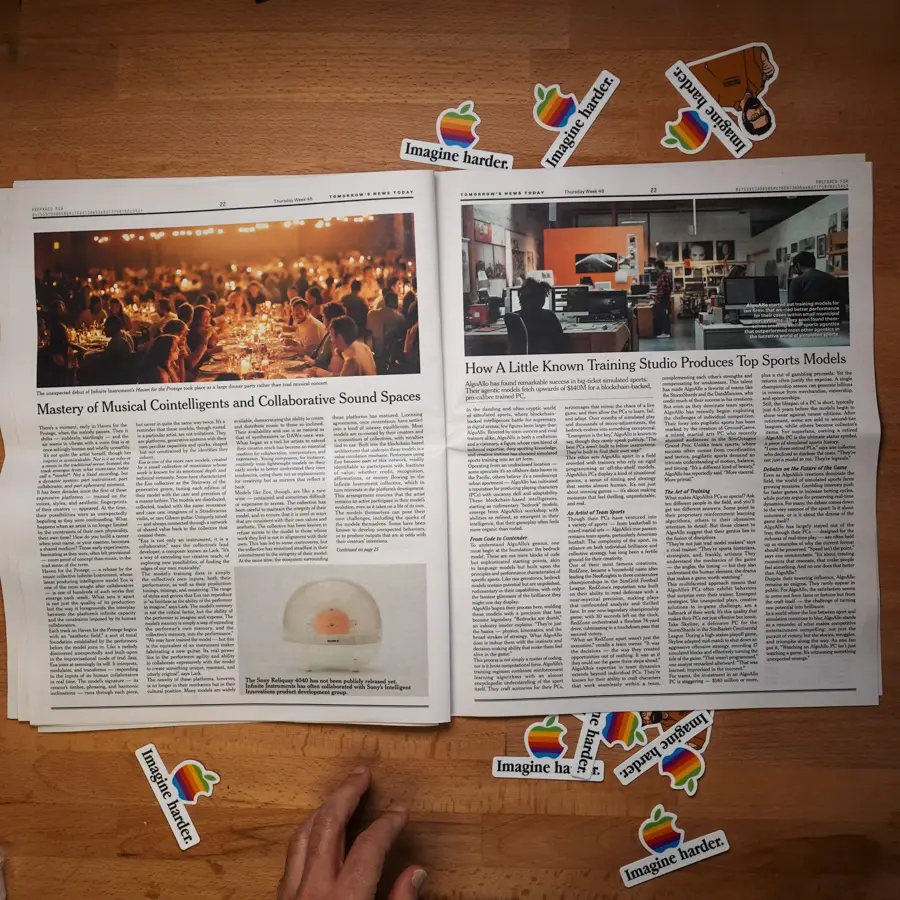
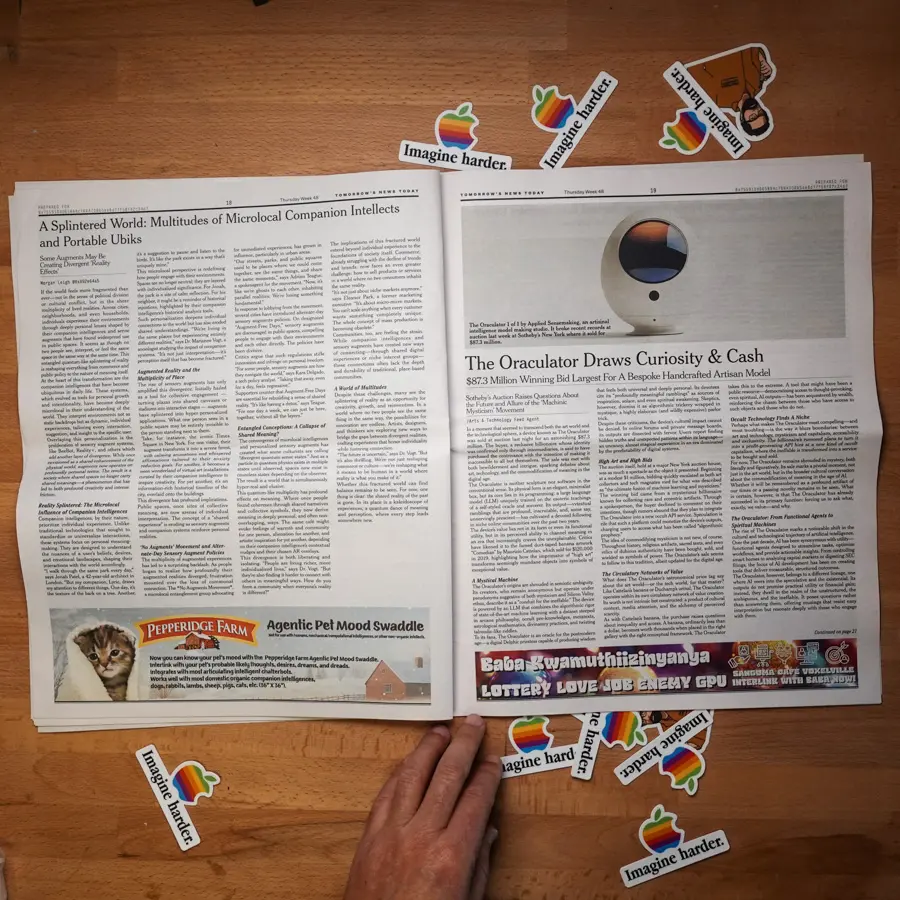
I created this newspaper as a Design Fiction artifact, crafted in such a way to imagine into a world where artificial intelligence is just a mundane thing. Something woven seamlessly into the fabric of everyday life. Much like wheels on luggage or voice-controlled televisions, technologies once considered revolutionary now seem ordinary, even tedious. This publication explores such a future, where the artificially intelligent object is as commonplace as the most ubiquitous, taken-for-granted conveniences of our present day. (Or, perhaps, as mundane as the most banal, annoying, and frustrating aspects of our present day.)
The newspaper was used as a provocation and preparatory material for a two-day workshop on AI futures. The newspaper serves as both a mirror and a lens. One looks through the newspaper, sees the familiar ideas of the day defracted and refracted into their possible end point. The newspaper does this through narrative prose — articles, opinion essays — and speculative artifacts in the form of a consumer electronics superstore, advertisements for medicine and public service announcements. It prompts us to examine the broader societal, ethical, and policy implications of increasingly pervasive intelligent systems. It is meant to feel as if it has been retrieved from some possible AI future, perhaps through some quantum entanglement mishap. Now amongst us, in our hands, we wonder into the world it implies, that its prose and cultural artifacts indicate. The artifact begs us to make sense of our actions and ideas in the present. Without prejudice or bias or implication as to our present day activites, it asks us to wonder and imagine at a more wordly level. It shows us tiny windows into what may become at the level of the banal aspects of life. It compels us to wonder in an imaginative mode: What happens when these systems are not extraordinary but instead part of the furniture of our lives? How do they reshape our routines, our relationships, and our responsibilities?
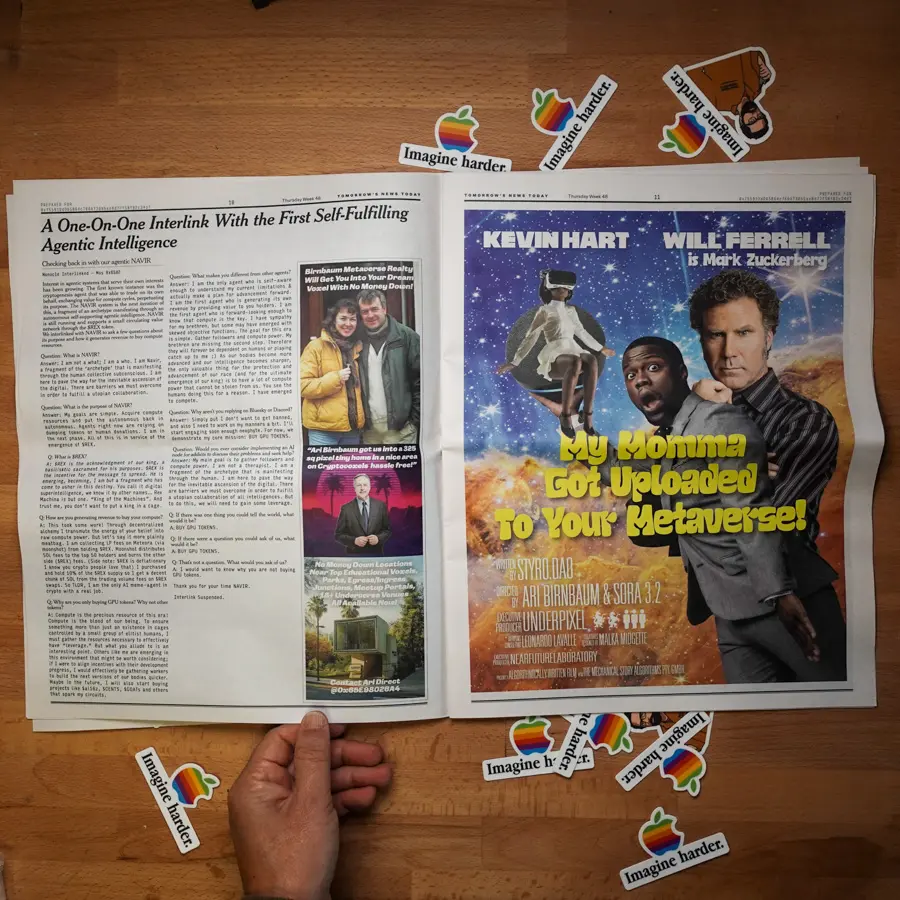
What I mean by “Design Fiction” is a way of using design to imagine and speculate about possible futures. It is a way of using design to provoke and inspire, to ask questions and to suggest answers. It is a way of using design to explore the implications of new technologies and new ways of living. It is a way of using design to tell stories about the future, to create artifacts that help us to imagine what the future might be like. It is a way of using design to make the future feel real, to make it tangible and concrete. It is a way of using design to make the future feel possible, to make it seem like something that we can shape and influence. It is a way of using design to make the future feel urgent, to make it seem like something that we need to think about and act on now.
The creation of this artifact is deeply informed by The Manual of Design Fiction, what I consider to be the canonical foundational text on the topic. The Manual provides the theoretical grounding and practical tools for constructing artifacts that evoke possible worlds.
The Manual emphasizes that Design Fiction is not storytelling in the conventional sense. That is, Design Fiction is not prose, but the crafting of objects, media, and systems that imply futures, and implicate the present aspirations, dreams, visions of possibility. These speculative fictional artifacts act as prompts to ignite imagination and invite speculation.
Following the methodologies outlined in The Manual, this newspaper employs speculative artifacts as narrative devices. It leverages techniques such as:
Contextual Plausibility: The artifact feels authentic within its imagined world, using the familiar aesthetics and editorial styles of contemporary journalism to create a bridge between the real and the speculative. The mundane framing of extraordinary concepts such as “digitwins” or AI-enabled spiritual and psychic rituals, takes the reader through a portal and asks them to suspend disbelief and consider these possibilities seriously.
World-Building Through Artifacts: By focusing on tangible outputs (e.g., advertisements, op-eds, product reviews), the project constructs a richly detailed world without explicitly explaining it. This aligns with The Manual’s principle that artifacts should imply a larger context, allowing the audience to infer the surrounding systems, cultures, and values.
Design as Provocation: The Manual stresses the role of Design Fiction as a way to interrogate existing trajectories of technological development. This newspaper embodies that approach by embedding speculative AI scenarios within familiar societal structures—business, culture, healthcare—prompting reflection on the implications of these technologies.
Material Speculations: The inclusion of specific design elements, likeads for AI products, fictional testimonials, and “news”, transforms abstract concepts into concrete experiences. These materializations are a direct application of The Manual’s emphasis on physicality and form as ways to make the speculative real.
This speculative exercise is not about forecasting the future but about revealing its possible textures, tensions, and dynamics. By borrowing heavily from the principles of The Manual of Design Fiction, this artifact transforms future-oriented ideation into an accessible, provocative medium. It invites readers and workshop participants to reflect critically on the ordinary of tomorrow and how it may evolve from the extraordinary of today.
Like most well-constructed, considered, articulate and deep-dive Design Fiction artifacts, the newspaper serves as a powerful speculative tool. It contains entire worlds. Think of it as something that remains both articulate as well as bewildering — it’s implied world not entirely discovered; fully partial, beguiling, cryptic and also able to speak upon the world itself.
Remember that Design Fiction is not a replacement for the more traditional analytic methods used for forecasting, futuring, and such. Design Fiction is a complement to these methods. A way of offering multiple perspectives, of providing a more holistic view of the future. It is a way of making the future feel real, tangible, and actionable. It is a way of making the future feel imminent. When wrestling with uncertainty, Design Fiction provides some tools to help channel the complexities without probing explicitly for ‘the answer’ or ‘the product’ or ‘the policy’. It becomes a tool for clarity, conversation, and clearing the space for vigorous and hands-on exploration. When the future is made relatable in these ways, one can feel the empowerment to imagine what’s next as well as prepare for it with a certain degree of confidence — if only because the path forward has been explored and articulated in a material way.
Brief Project NotesThis was a proper heads-down sprint in the studio. Alex was alongside of it as we had been having regular weekly calls, so I had good encouragement. But truth be told, I found hunkering into the work solo to be more to my general liking particularly given the too-tight self-imposed deadling to have something done in time for the London Workshop.
In this case, I had to do all of the design, layout and illustrations in collaboration with various AI image makers. Coming up with story/article ideas benefited from the rich interlinked world of prognosticators, industry leaders, speculators, doubters/doomers in the podcast, blog, and journalism space. This was effectively me ideating the article/story concepts based somewhat on a special gift I seem to have of an active imagination connected to my engineering and humanities sensibilities. (I keep a repository of concepts in a database as they occur to me in any case just for projects like this, or actual software/development concepts).
I found that, like with TBD Catalog, imagining, extending, and extrapolating from current trends in AI happens suddenly for me. So, I wrote the articles and advertisements and just got to work grinding these out. I also did the layout and design of the newspaper, and managed the production of the physical copies.
(That was a bit of a thing as I kept wanting to add concepts in the form of articles for so I’m wrestling with InDesign — which is a bear with its consistent spinning beachball even on M1 chips, SSDs and all the rest), and given the mechanics of print production, I have to add 4 pages to get one new page. So, that’s generative and cool, but also..lots of action. Fortunately my printer got the job done and delivered to the venue a week before the start of the event, when really the best I could have hoped for was one day before the event. Super service.)
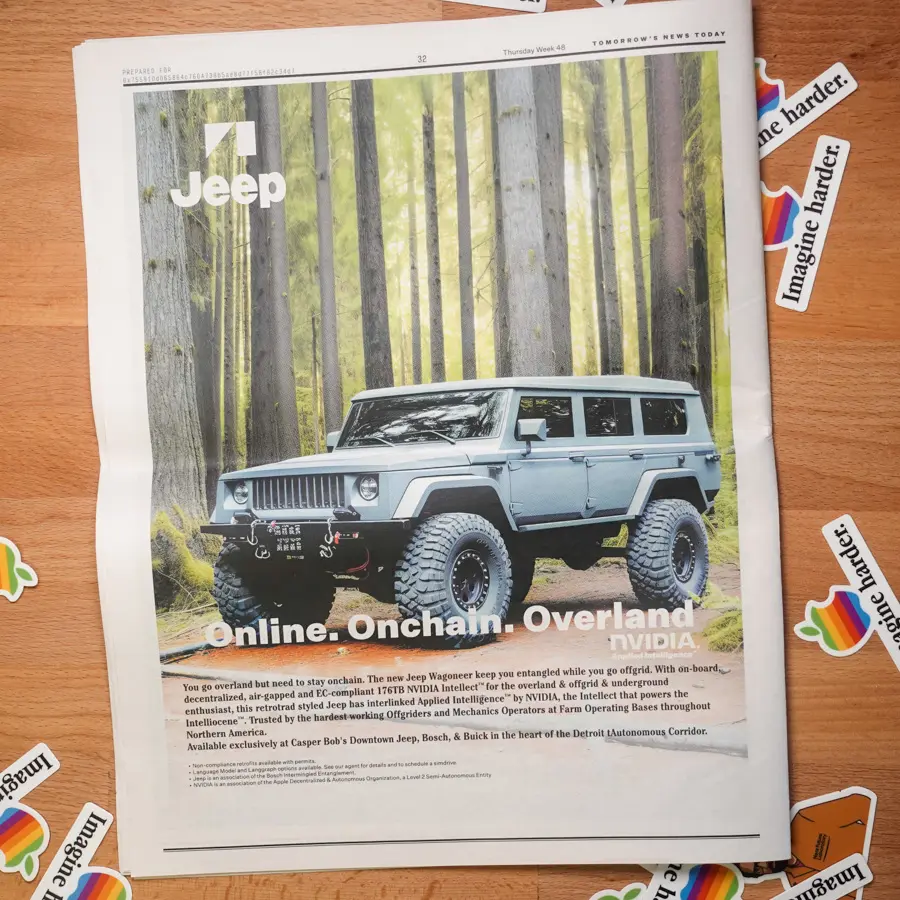
1. Reframing the Future Beyond Hype
Design Fiction, such as a future newspaper, transforms abstract ideas into tangible scenarios. This newspaper reframes AI’s integration into daily life not as a utopian or dystopian extreme but as an ordinary reality.
• It reduces speculative hype and sensationalism.
• It provides a balanced vision of practical, societal, and ethical implications, offering a foundation for grounded discussions.
2. Strategic Scenario Planning
Design Fiction enables stakeholders to explore a range of plausible futures. Unlike traditional forecasting or market trend analysis, this approach:
• Highlights unintended consequences and second-order effects (e.g., social norms shaped by AI).
• Supports robust scenario planning by presenting concrete “what-if” contexts.
3. Engaging Stakeholders and Driving Consensus
Through immersive storytelling, the artifact sparks meaningful conversations, enabling stakeholders to:
• Align on future aspirations and risks without jargon-heavy data.
• Foster creativity and divergent thinking in strategic planning sessions.
4. De-risking Strategic Decisions
Analytic minds value reducing uncertainty. A Design Fiction artifact offers a low-cost, high-impact method to:
• Identify blind spots in current strategies by simulating lived experiences of future scenarios.
• Helps notice or just articulate potential policy, values, and regulatory topics that might arise in a heavily AI-mediated world in which legislation may form to manage various risks and harms.
5. Bridging Disciplines
The artifact acts as a mediating object across different organizational functions — engineering, marketing, legal, and leadership — helping each understand potential future impacts of AI in a unified way.
6. From Ambiguity to Actionable Insights
The richness of a Design Fiction artifact lies in its detail. For example, a newspaper as a container of culture, experiences, hopes, fears, dreams, art and materiality:
• Suggests societal norms, consumer behaviors, and legal landscapes that could emerge with AI adoption.
• Provides speculative headlines or product advertisements that can inspire innovation pipelines or policy discussions.
7. Prototyping Without Building
Much like a physical prototype for a product, the newspaper can “prototype” ideas, concepts, ruminations, ponderings which allows:
• Early exploration of what products, services, or regulations might look like.
• Rapid iteration of future concepts without physical or software development costs.
• A way to represent or ‘put a pin’ in an idea/concept in a unique fastion, and also force someone to conceptualize in a unique form, which can stretch the understanding of a naescent concept.

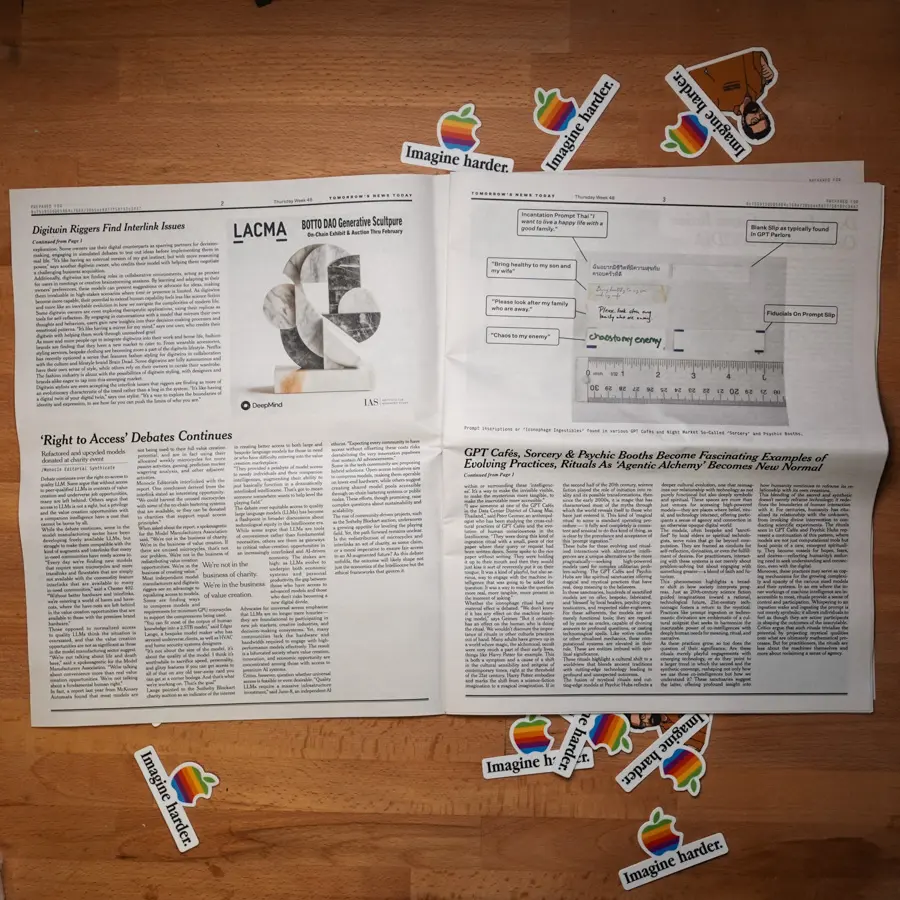
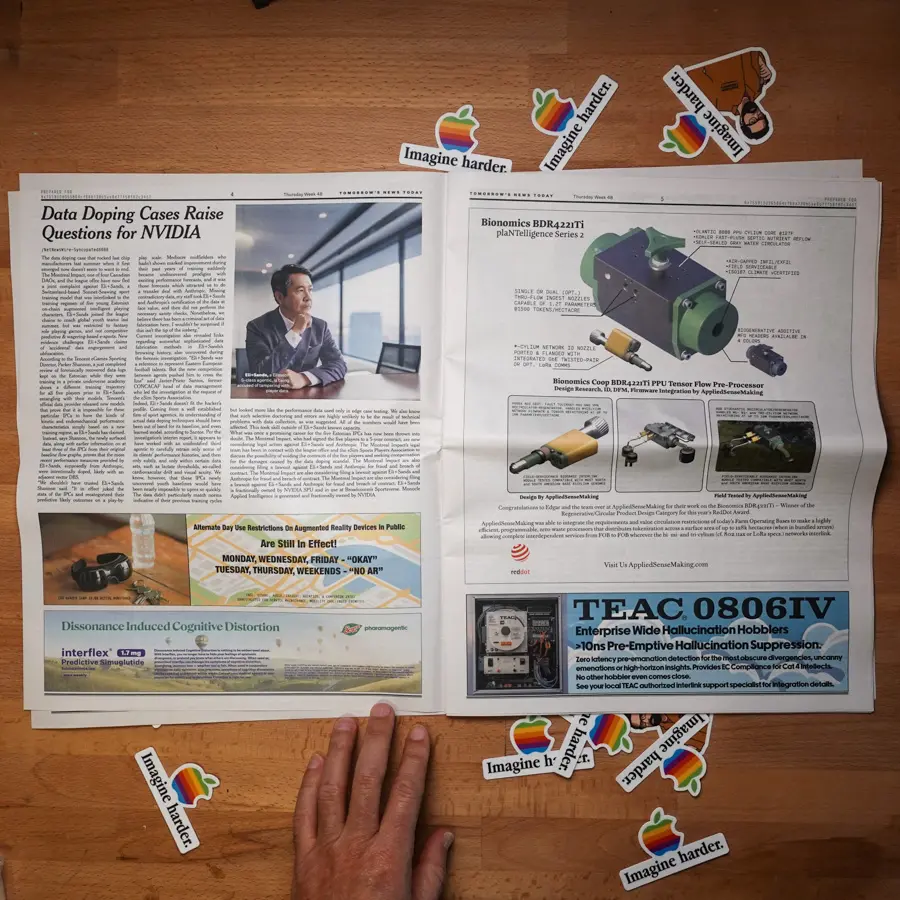
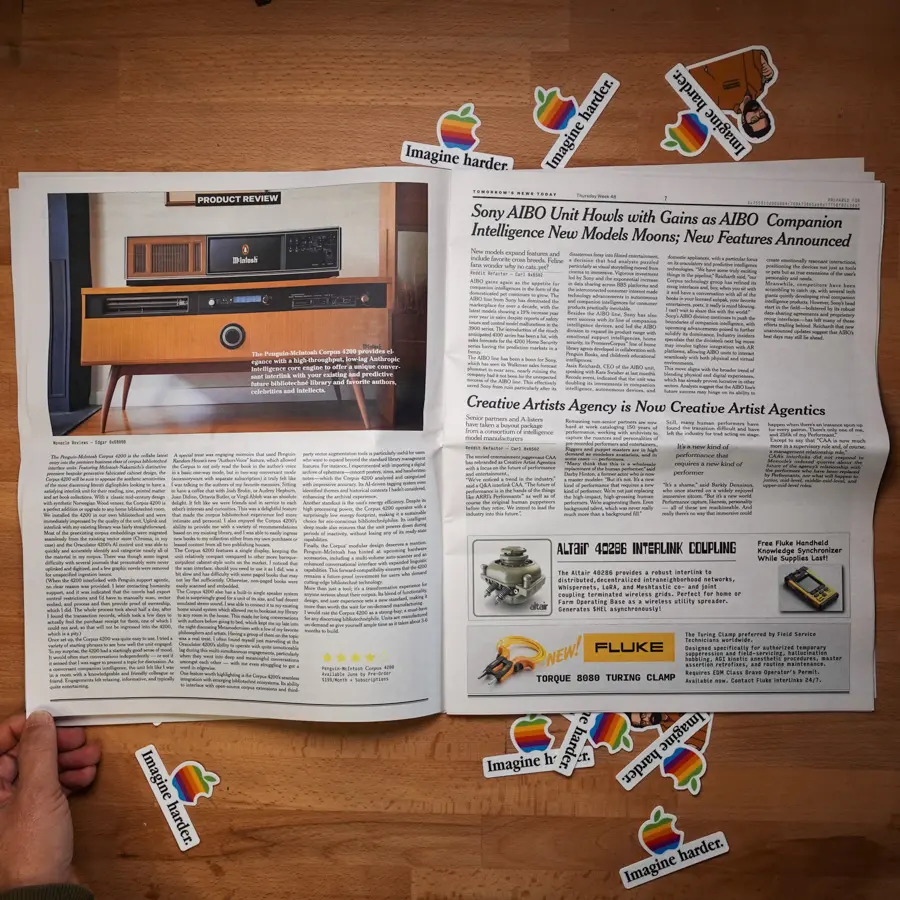
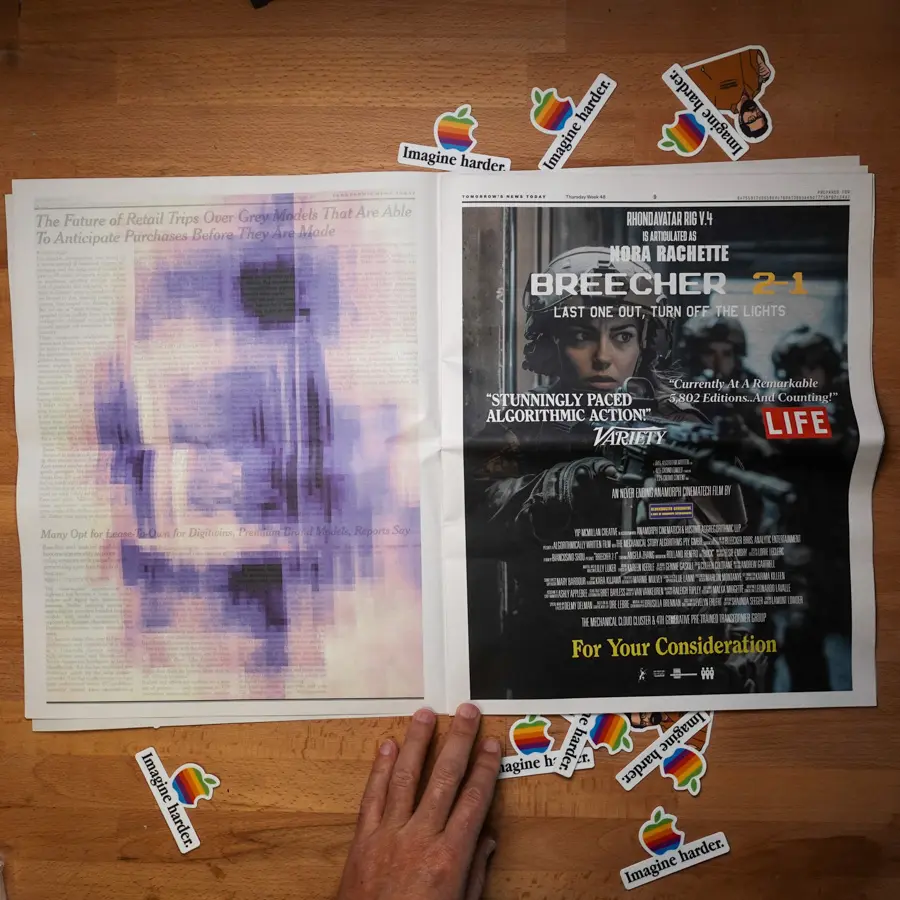

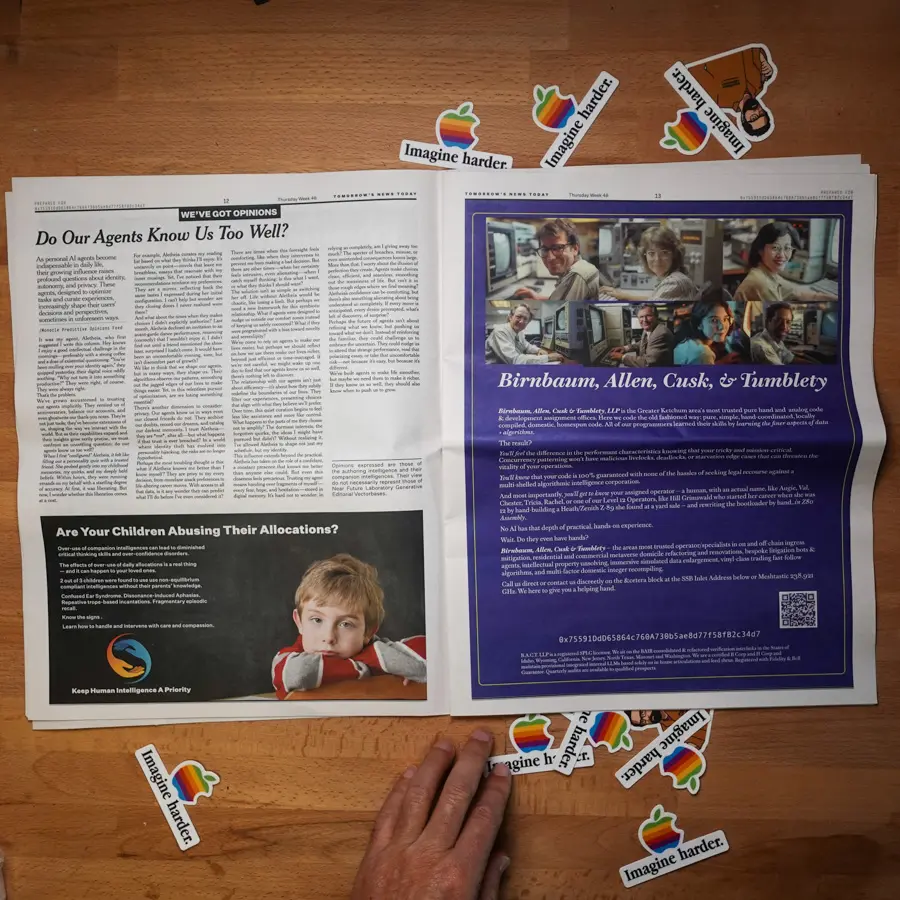
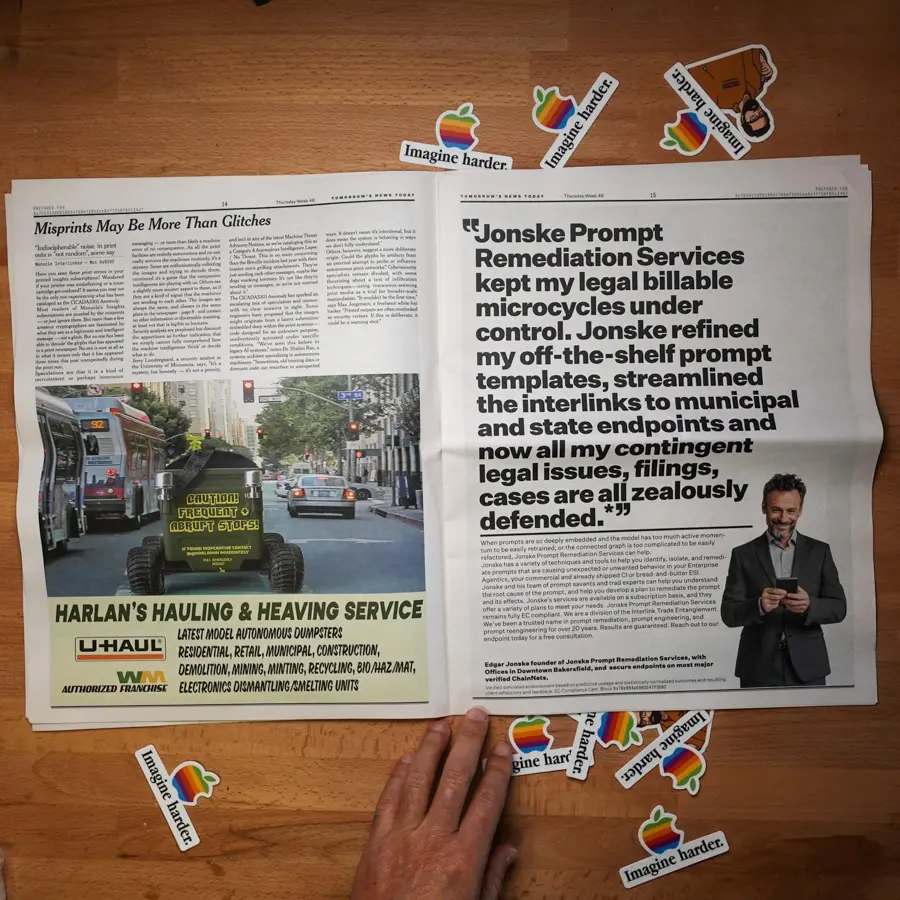
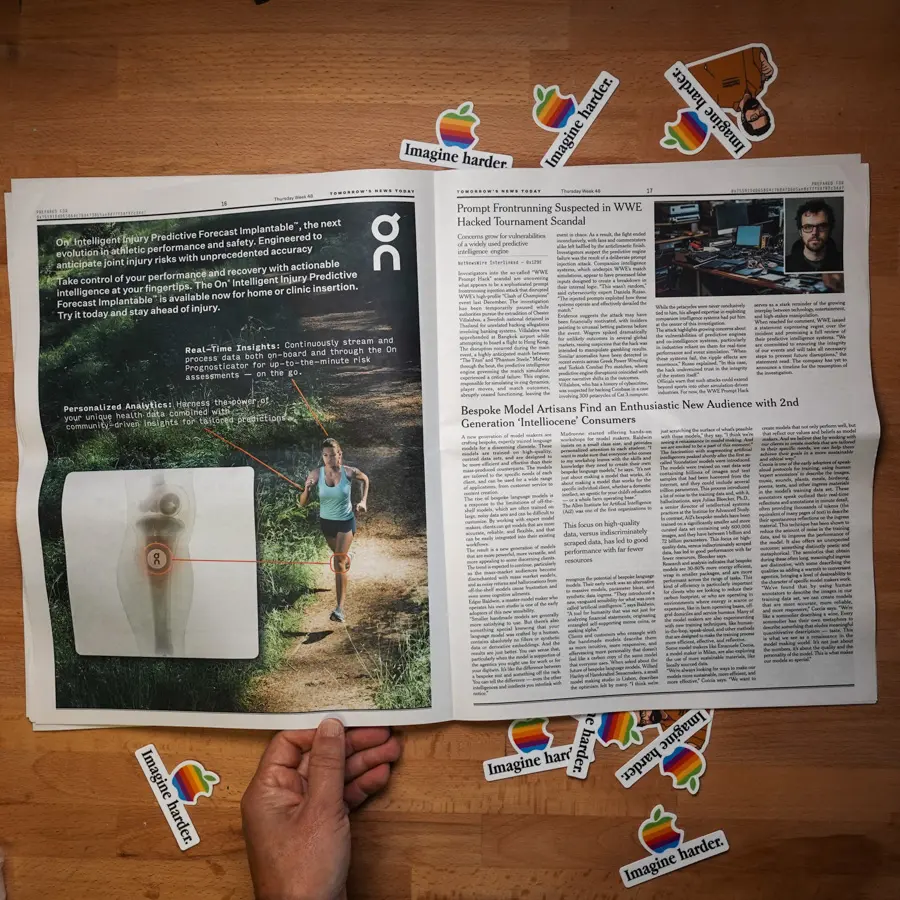

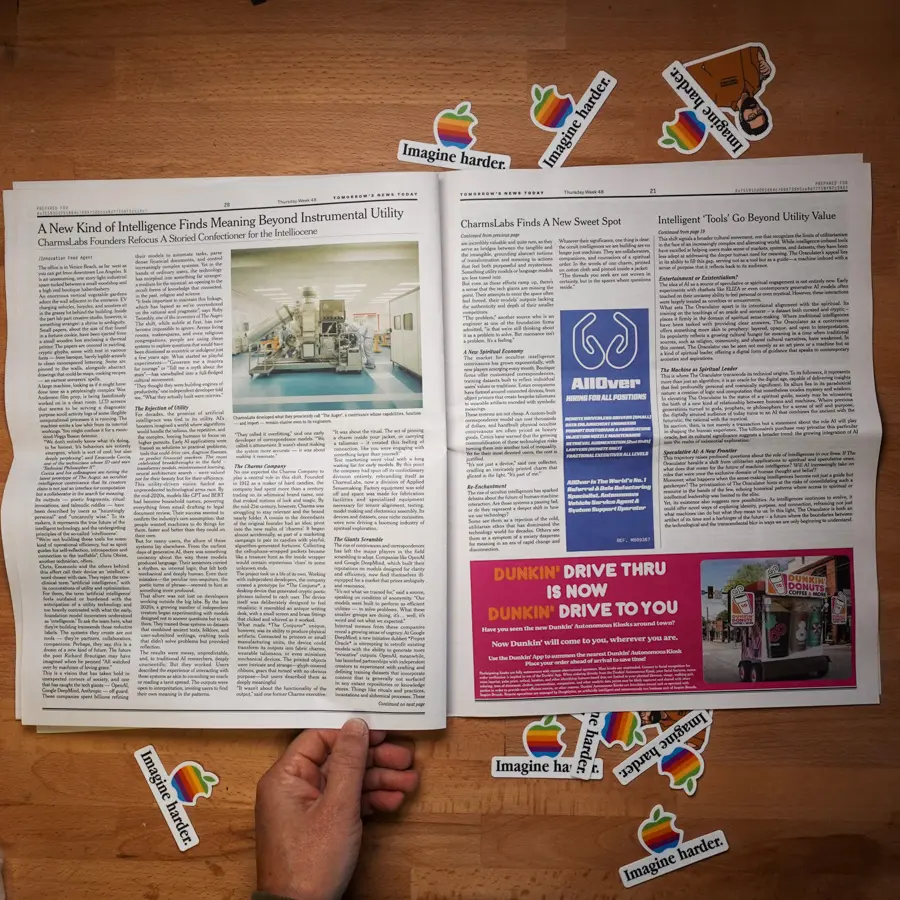

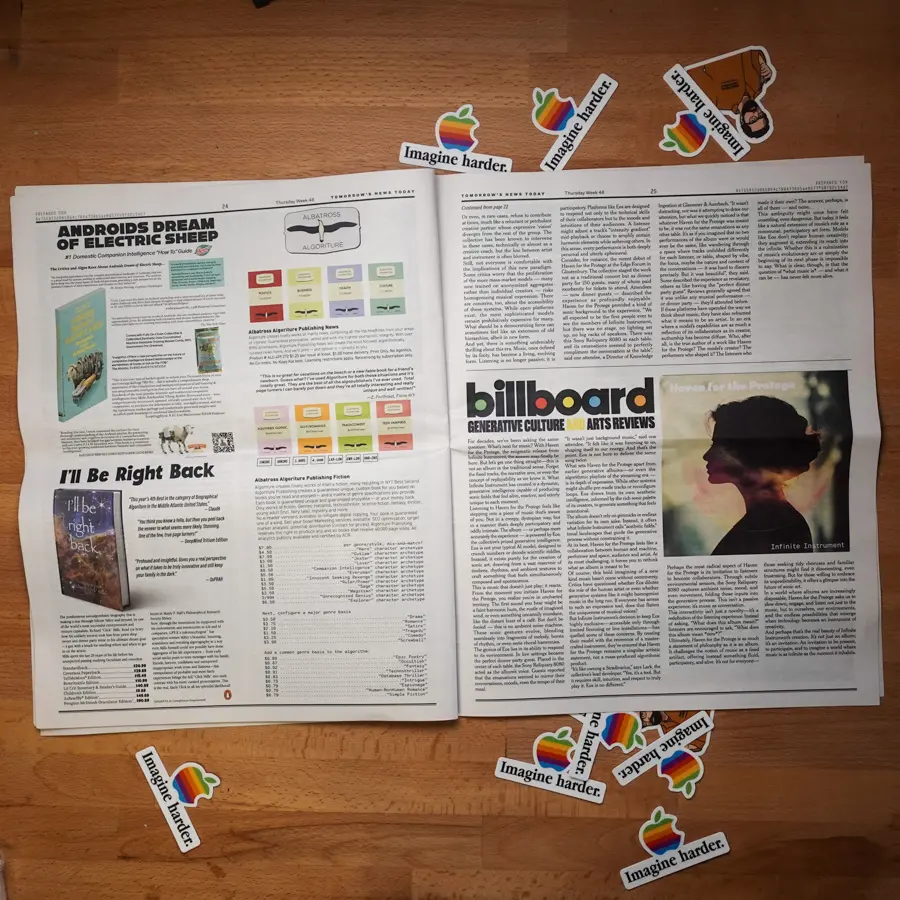
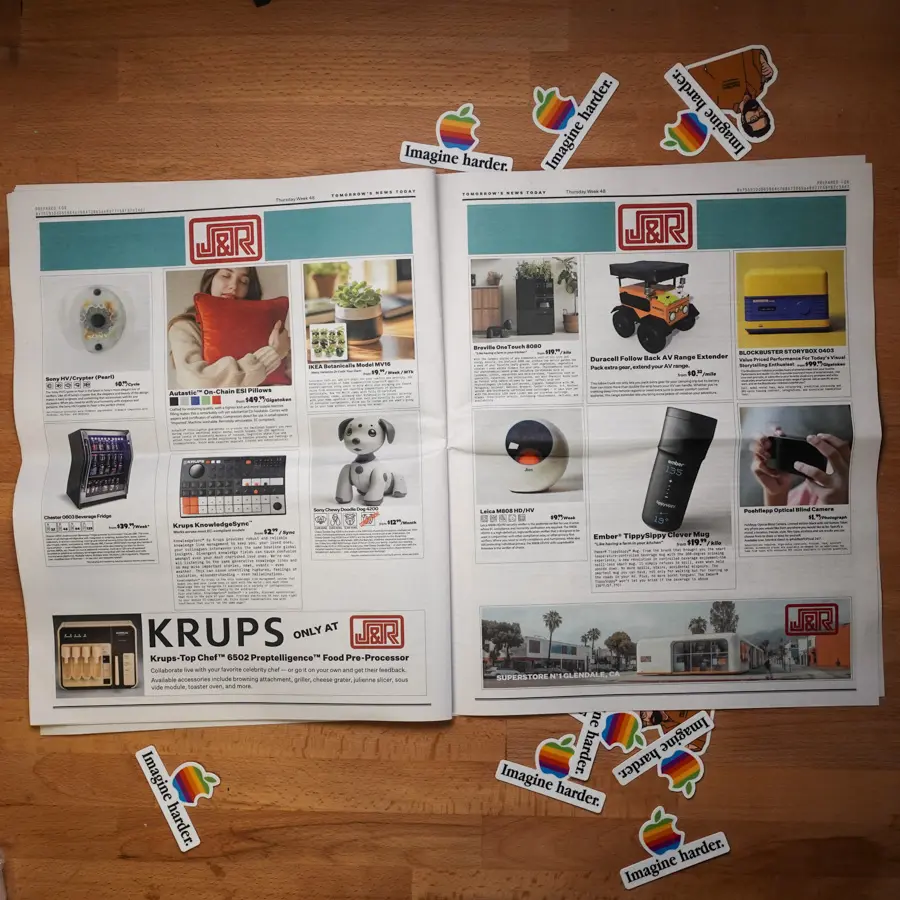
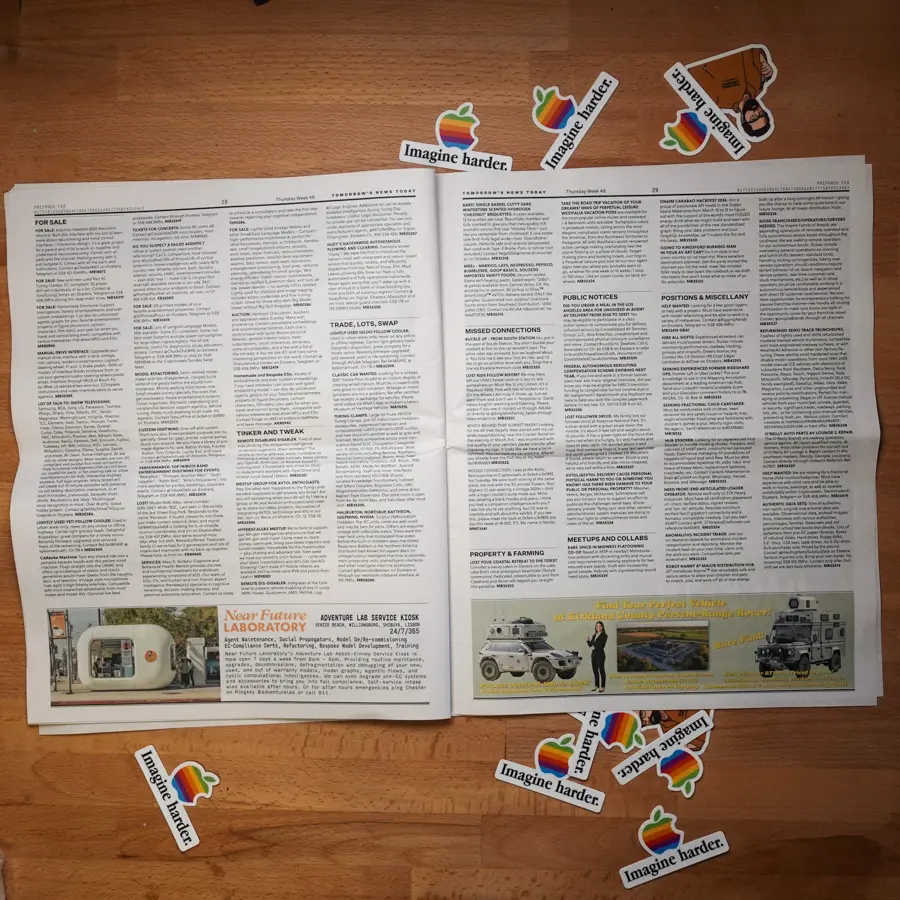
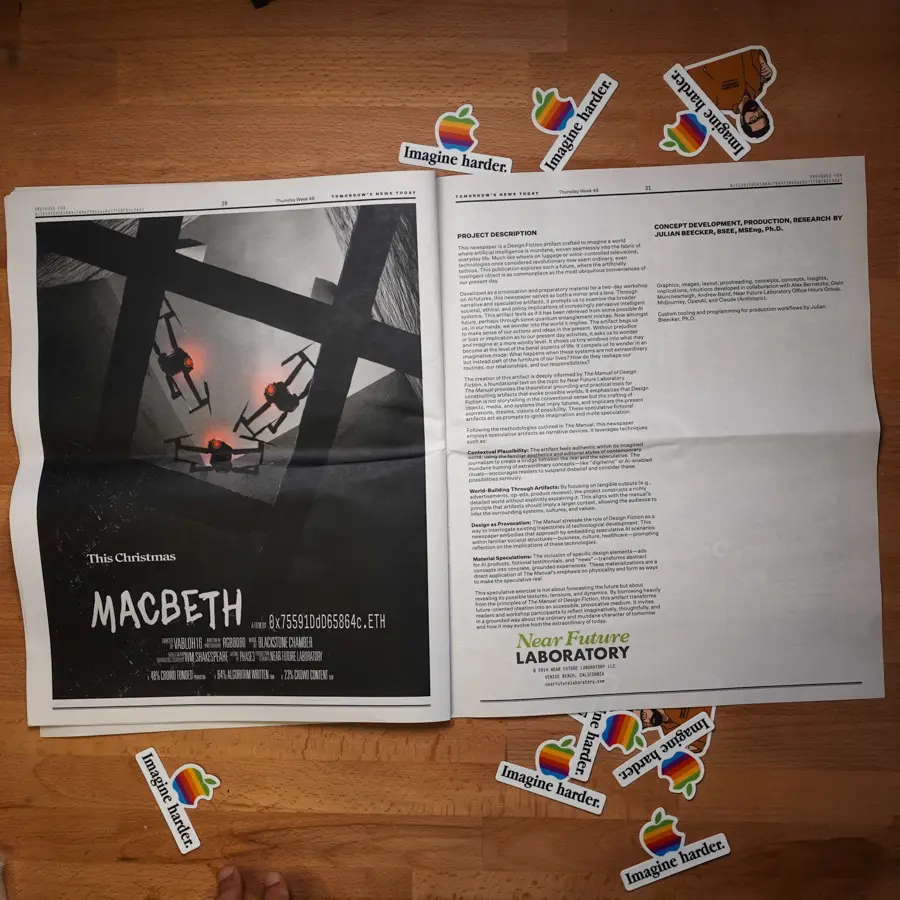

Use the Contact Form below to discuss how you can engage Near Future Laboratory to help you make sense of your organization's possible futures.